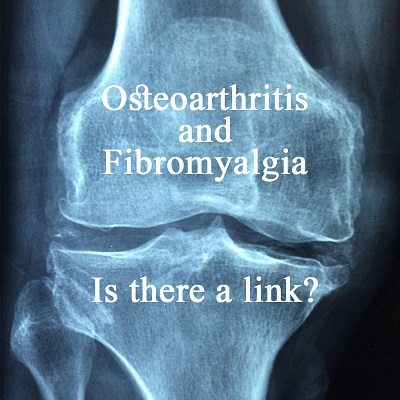 Osteoarthritis and fibromyalgia are often confused with one another because of the similar symptoms they share. They’re both characterized by stiffness, limited mobility, and muscle pain. But they also have distinct differences. The pain patients with fibromyalgia feel is more widespread compared to osteoarthritis’ localized pain in the joints. In some cases, patients may have both osteoarthritis and fibromyalgia.
Osteoarthritis and fibromyalgia are often confused with one another because of the similar symptoms they share. They’re both characterized by stiffness, limited mobility, and muscle pain. But they also have distinct differences. The pain patients with fibromyalgia feel is more widespread compared to osteoarthritis’ localized pain in the joints. In some cases, patients may have both osteoarthritis and fibromyalgia.
Understanding the link between osteoarthritis and fibromyalgia can help in creating a targeted treatment method that could help patients cope with their condition more effectively.
Fibromyalgia vs. Osteoarthritis
Osteoarthritis is a degenerative joint disease that happens when the cartilage in your joints breaks down. Osteoarthritis can affect any joint in your body, but the most common ones are the spine, hips, knees, and hands.
Its symptoms include pain, stiffness, tenderness, inflammation, hard lumps in the joint, and a popping or crackling sound when you use the affected area. You may also experience loss of range of motion and worsening pain. Anyone can suffer from osteoarthritis, but people who are obese, over the age of 65, and women are more at risk.
Meanwhile, fibromyalgia is a condition that remains a mystery to health experts. So far, it’s considered a long-term chronic condition characterized by fatigue, pain, and impaired sleep and cognitive function. It can also lead to anxiety and depression. Over 12 million Americans, particularly women between the ages of 25 and 60, are suffering from this condition.
Patients are hypersensitive to heat and cold and feel a tingling sensation in their fingers and feet. They feel extremely tired, even if they just woke up. They suffer from generalized muscle and joint pain and chronic headaches.
There is no cure for both osteoarthritis and fibromyalgia, but you can manage the pain through exercise, acupuncture, physical therapy, massage, pain medications, weight management, and other lifestyle changes.
Is there a Link Between Osteoarthritis and Fibromyalgia Pain?
Osteoarthritis and fibromyalgia conditions make patients feel intense and chronic pain. Aside from that, you may even suffer from both conditions at the same time. It can be a debilitating experience and can lower your quality of life if not managed properly.
Scientists from The University of Manchester’s Human Pain Group, headed by Anthony Jones, decided to find out if there is a link between the two health conditions. They also wanted to discover why sufferers of osteoarthritis report different pain levels and why fibromyalgia sufferers can feel pain in areas where there is no evidence of joint damage.
The team sought to determine if there’s any similarity between the pain and discomfort that osteoarthritis patients and those who suffer from fibromyalgia experience.
Similar Brain Mechanisms Discovered
The clinical trial involved applying painful pulses to patients who are suffering from fibromyalgia and osteoarthritis pain. The results revealed increased activity in the insula cortex when expecting a painful pulse. It’s the part of the brain that predicts the extent and intensity of the expected pain. The team considered the increased activity in this area as a possible reason that some patients feel greater pain than others.
The team also noted a decrease in pain anticipation in the dorsolateral prefrontal cortex. This part of the brain helps in developing coping mechanisms for pain. They believe that if the activity in the dorsolateral prefrontal cortex is increased, patients of both osteoarthritis and fibromyalgia may finally be able to manage their pain and cope with their condition more effectively. Once this happens, patients will no longer have to be overly dependent on anti-inflammatory and pain medications.
More research is needed to establish a solid link between osteoarthritis and fibromyalgia. But the discovery of similar brain mechanisms for both conditions may pave the way for the development of targeted therapies that could make life easier for the affected patients.
For now, there is no cure for fibromyalgia and osteoarthritis. Exercising regularly and eating the right food can help you feel better, both physically and mentally. Don’t forget to consult your doctor first to make sure that you get a treatment plan that’s suitable for your unique condition. With medications, lifestyle changes, and therapies, patients can manage chronic pain and the other symptoms of both diseases.






